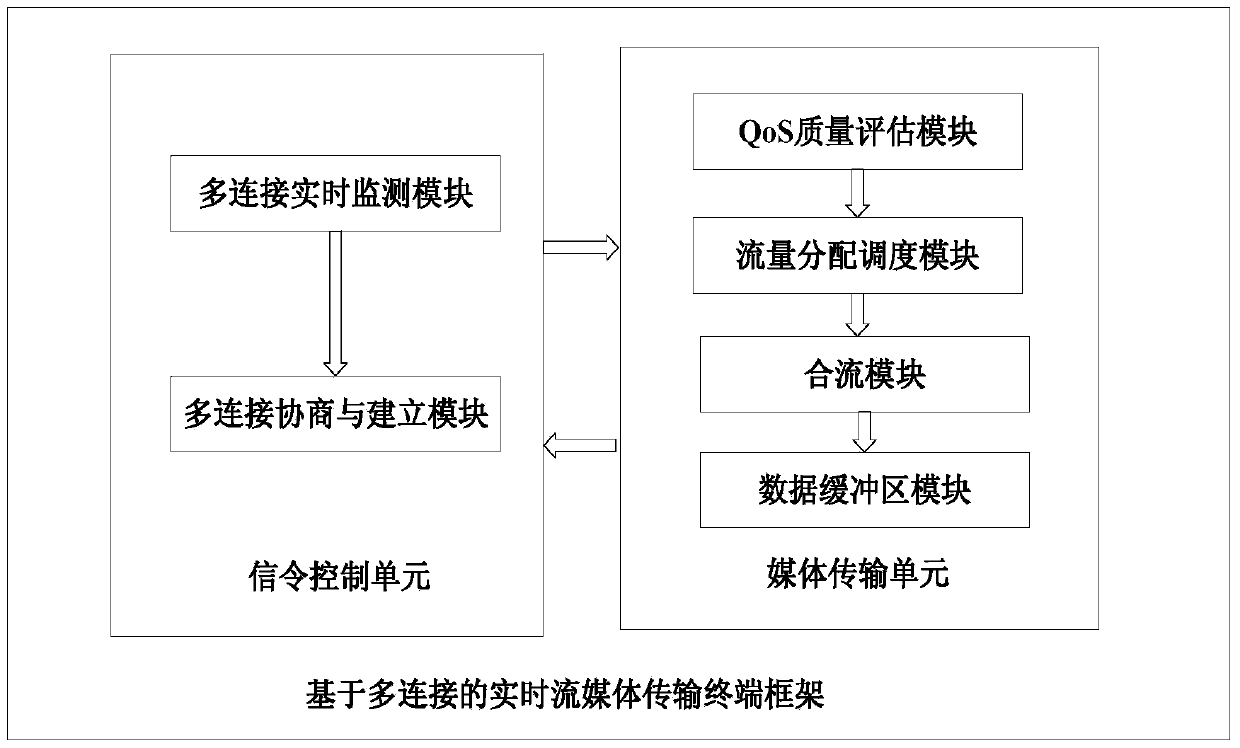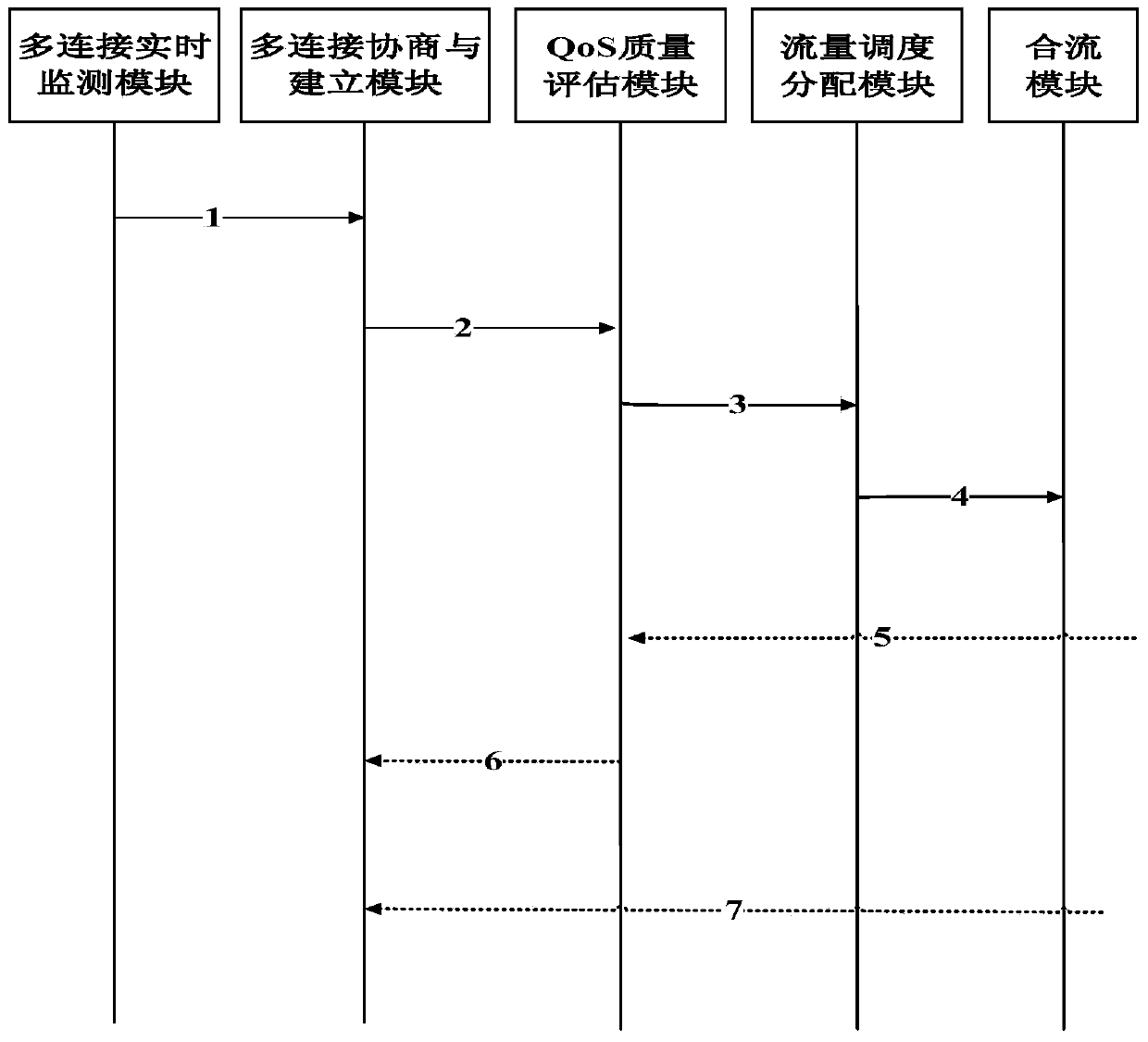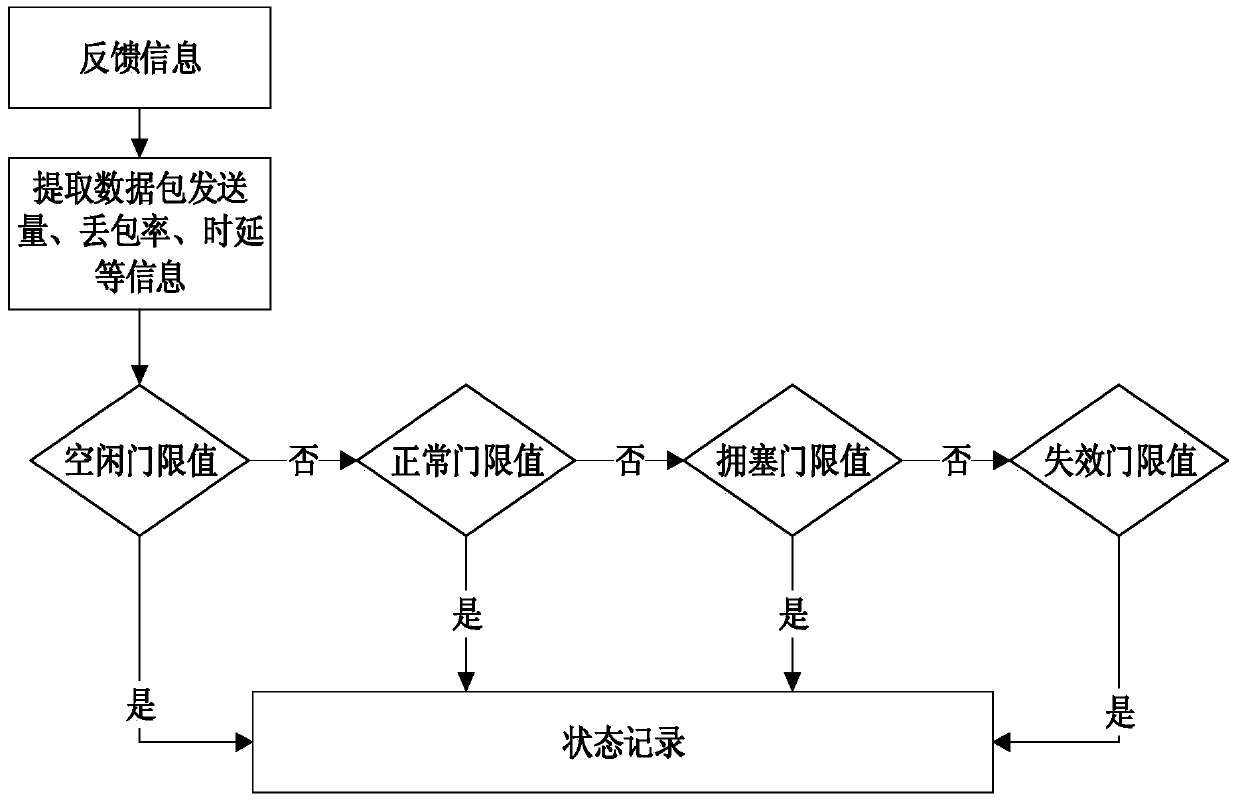Real-time stream media transmission terminal and method based on multi-connection
A media transmission and multi-connection technology, applied in transmission systems, electrical components, etc., can solve the problems of less useful data information, increase the size of packet header bytes, and fail to achieve aggregated effective bandwidth, so as to improve utilization and transmission efficiency, and improve The effect of data transmission rate and good promotion and application prospect
- Summary
- Abstract
- Description
- Claims
- Application Information
AI Technical Summary
Problems solved by technology
Method used
Image
Examples
Embodiment Construction
[0036] In order to make the object, technical solution and advantages of the present invention clearer, the present invention will be further described in detail below in conjunction with the accompanying drawings.
[0037] see figure 1 , introducing the structure of the multi-connection-based real-time streaming media transmission terminal of the present invention: the terminal is built on the basis of a traditional single-connection terminal, including all functional modules of a single-connection terminal, and a signaling control unit and a media transmission unit are added, here only Introduces new modules. in:
[0038] (1) Signaling control unit: responsible for completing the negotiation and establishment of multi-connection links: first exchange signaling messages with network entities, and complete various signaling interaction functions including user registration and establishing signaling channels; then establish signaling After the channel, the media transmission...
PUM
 Login to View More
Login to View More Abstract
Description
Claims
Application Information
 Login to View More
Login to View More - R&D
- Intellectual Property
- Life Sciences
- Materials
- Tech Scout
- Unparalleled Data Quality
- Higher Quality Content
- 60% Fewer Hallucinations
Browse by: Latest US Patents, China's latest patents, Technical Efficacy Thesaurus, Application Domain, Technology Topic, Popular Technical Reports.
© 2025 PatSnap. All rights reserved.Legal|Privacy policy|Modern Slavery Act Transparency Statement|Sitemap|About US| Contact US: help@patsnap.com



